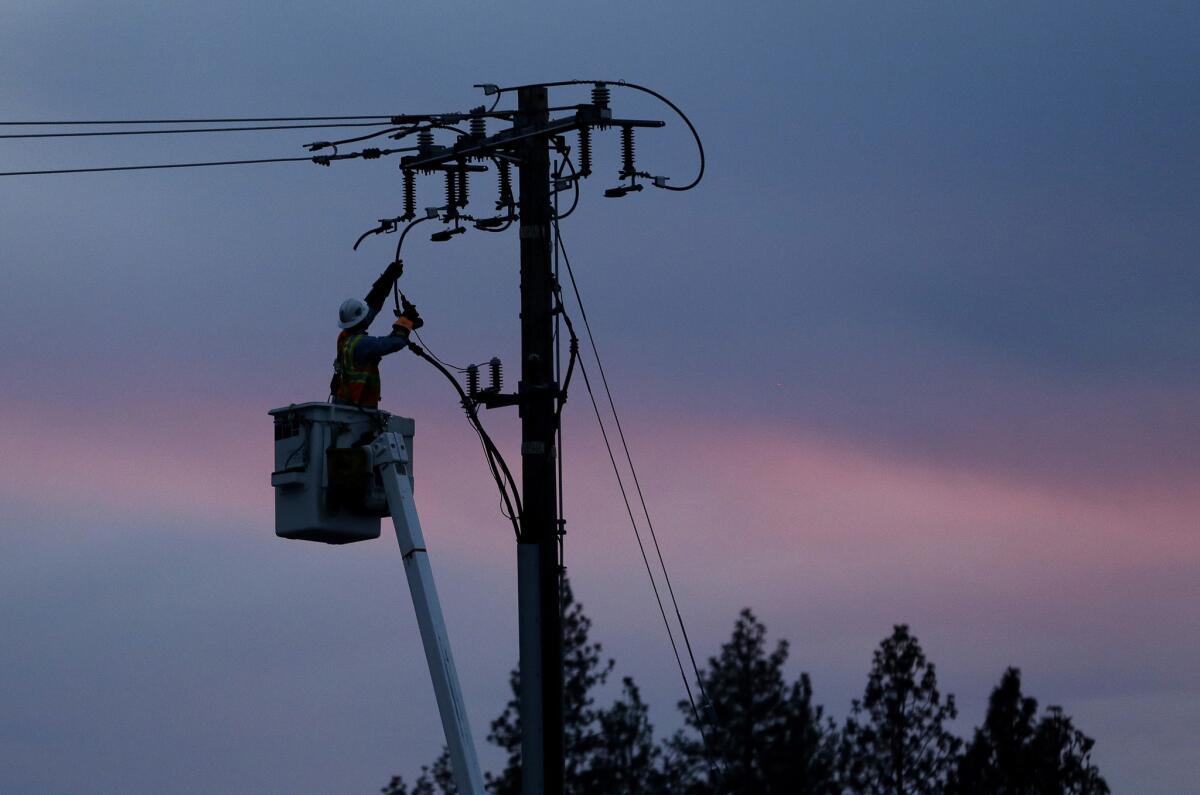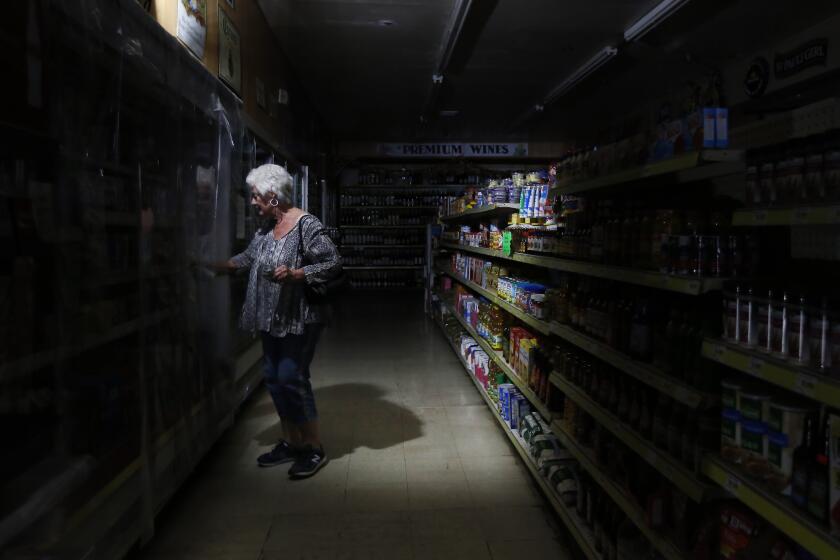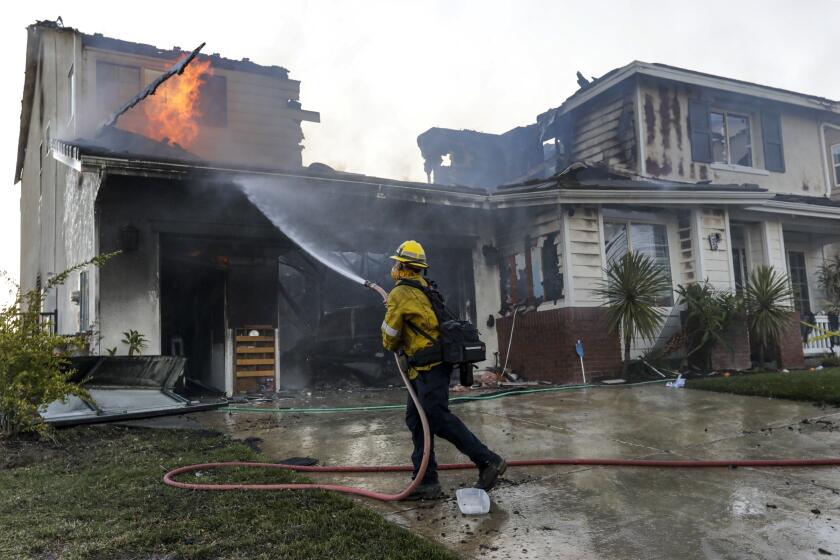Intentional blackouts of this magnitude are unprecedented in California history

- Share via
Never before in California history have more than 2 million people gone five days without electrical power because of the intentional safety policy of a utility.
But that is the plan shaping up under a massive outage across Northern and Central California, put into effect by Pacific Gas & Electric Co. to prevent more wildfires like the massive Kincade fire in Sonoma County from erupting as winds howl across the region.
The outage will bust national averages for blackouts, though not the worst ones in history.
PG&E’s shut-off began in phases on Friday afternoon, and by Sunday evening the utility had cut current to 940,000 homes and businesses, affecting more than 2 million people, with one more phase to come in Fresno and Madera counties, officials said.
The outages stretch as far north as Eureka and as far south as Salinas along the coast, as well as along the Sierra foothills.
This weekend’s planned power outages could be the largest yet in California, as utilities such as Pacific Gas & Electric and Southern California Edison order wide blackouts to prevent more blazes — and more wildfire liability — amid strong, hot winds.
The winds are not expected to subside until Monday, but it will take another 48 hours to get power flowing again, PG&E spokeswoman Mayra Tostado said. The utility will have to deploy thousands of inspectors to make sure the lines were not damaged in the wind, or else they could ignite a fire.
The job is so massive that 1,000 out-of-state workers will assist, some from as far away as Florida under a mutual aid system. Helicopter crews and drones will fly over the lines as well.
The blackouts were being conducted in seven phases, and as of Sunday night the company had completed six, with one more to be announced.
The sixth outage hit customers in Kern County about 9 p.m. Sunday. A seventh will hit additional customers in Fresno and Madera counties, but the timing of that shutdown had not yet been determined.
“Some customers may see power back on sooner,” Tostado said. She added that if the utility began inspections before the winds stopped, it would just have to conduct a second inspection later.
The cause of the Kincade fire is still under investigation, but some suspicion is already turning to transmission lines owned by PG&E. The utility said one of its transmission lines experienced problems Wednesday night around the area where the fire broke out.
In a mandatory report sent to the California Public Utilities Commission, the company said one of its workers noticed that the California Department of Forestry and Fire Protection had taped off the area. PG&E said Cal Fire also pointed out a “broken jumper on the same tower.”
The broken jumper cable could have sent a powerful discharge of current through the tower to the ground, said Michael Wara, director of the Climate and Energy Policy Program at Stanford University.
“It’s like a lightning strike,” Wara said. “The millisecond that jumper broke, you would have had that happen.”
The policy of shutting down power emerged in recent years in California, but the full effect of the strategy did not become apparent until the recent fire season.
Utility power outages are complicating evacuation efforts as wildfires rage in Northern and Southern California.
The state’s major utilities were given an expanded set of rules to implement these power downs by the California Public Utilities Commission in a unanimous decision by the five-member board in May.
PG&E is by a wide margin the state’s largest utility, and Tostado said the current outage is the biggest it has implemented. San Diego Gas & Electric pioneered what is now called “public safety power shut-offs,” and the largest it ever conducted affected 23,000 customers in November.
Cutting power for five days to a million customers far exceeds national averages, according to federal data.
The average electrical outage even with “major events,” such as ice or wind storms, runs four hours, according to the U.S. Energy Information Administration. South Carolina ranks the worst with an average duration of 20 hours. New York and Nevada rank the best.
Hurricane Maria, which hit Puerto Rico and the East Coast, caused the nation’s most protracted power loss, measured as 3,393 million customer-hours of outage.
Even if the PG&E outage hits 1 million customers for a full five days, that would amount to just 120 million customer hours of outage.
More to Read
Sign up for Essential California
The most important California stories and recommendations in your inbox every morning.
You may occasionally receive promotional content from the Los Angeles Times.













